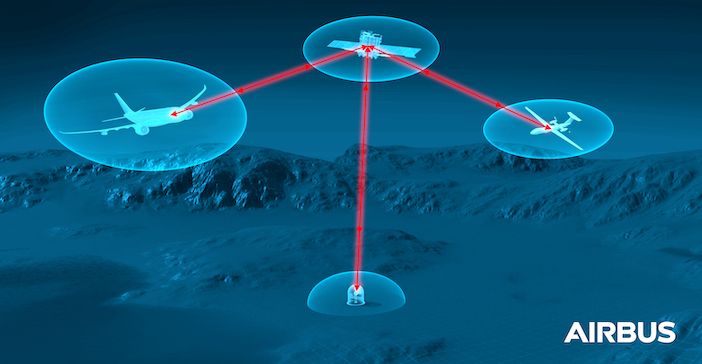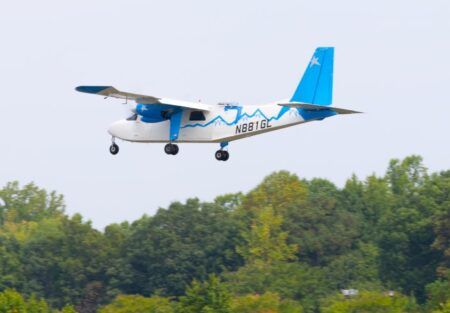Researchers from Airbus and Holland are developing and testing a laser communication terminal for aircraft, known as UltraAir, that aims to demonstrate the vastly improved bandwidth and reliability communications possible with laser links to satellites.
The use of laser links between satellites and terminals is widely seen as the next generation of satellite communications technology and several R&D programs are being conducted around the world. The technology deals with a number of problems with radio frequency bands, significantly increasing data transmission rates and bandwidth while improving security and resilience.
The communications improvements enabled by laser-based satellite communications are seen as key to enabling military aircraft and drones to link to the cloud during operations. They could also in the longer term let airline passengers establish more and better high-speed data connections.
Airbus has been developing laser-satellite communications technology as part of the European SpaceDataHighway program and is leading the development of the UltraAIr terminal and its ground and flight -testing program. Airbus Defence and Space in the Netherlands is responsible for making the terminals while Airbus’ subsidiary Tesat, which has technical expertise in laser communication systems will be involved in all testing activities.
The first tests of UltraAir are planned take place at the end of 2021 in Tesat’s laboratory in Stuttgart, Germany. Ground tests are expected start early 2022 in Tenerife, Spain, where connectivity will be established between an UltraAir demonstrator and the laser terminal embarked on the Alphasat satellite using the ESA Optical Ground Station.
For the final test, the UltraAir demonstrator will be integrated on board an aircraft for flight testing by mid-2022.
The Netherlands Organisation for Applied Scientific Research (TNO) is a partner in the project and will provide the experience in high-precision opto-mechatronics required for the terminals, supported by the Dutch space industry.
Engineers aim for the UltraAir terminal to be capable of providing laser connections between an aircraft and a satellite in geostationary orbit at 36,000km (22,000 miles) above the Earth using a highly stable and precise optical mechatronic system. The technology demonstrator will pave the way for future UltraAir products with data transmission rates that could reach several gigabits-per-second that also provide anti-jamming and a low probability of interception.
The development and testing of UltraAir is being funded by Airbus, TNO and the Netherlands Space Office (NSO) and is part of the European Space Agency’s (ESA) ScyLight (Secure and Laser communication technology) program.
The SpaceDataHighway satellite infrastructure is a public-private project between Airbus and the ESA. The SpaceDataHighway has achieved secure data transfer services at a rate of 1.8 Gbit/s in near-real time and tens of thousands of connections since 2017.
The SpaceDataHighway constellation consists of a growing number of European Data Relay System (EDRS) satellites in a geostationary orbit. These relay data collected by observation satellites to Earth in near-real-time, a process that would normally take several hours.
As well as avoiding bottlenecks, laser links also have the benefit of avoiding interference and detection, as in comparison to the already-crowded radio frequencies, laser communication is extremely difficult to intercept due to a much narrower beam. Thus, laser terminals can be lighter, consume less power and offer even better security than radio.





